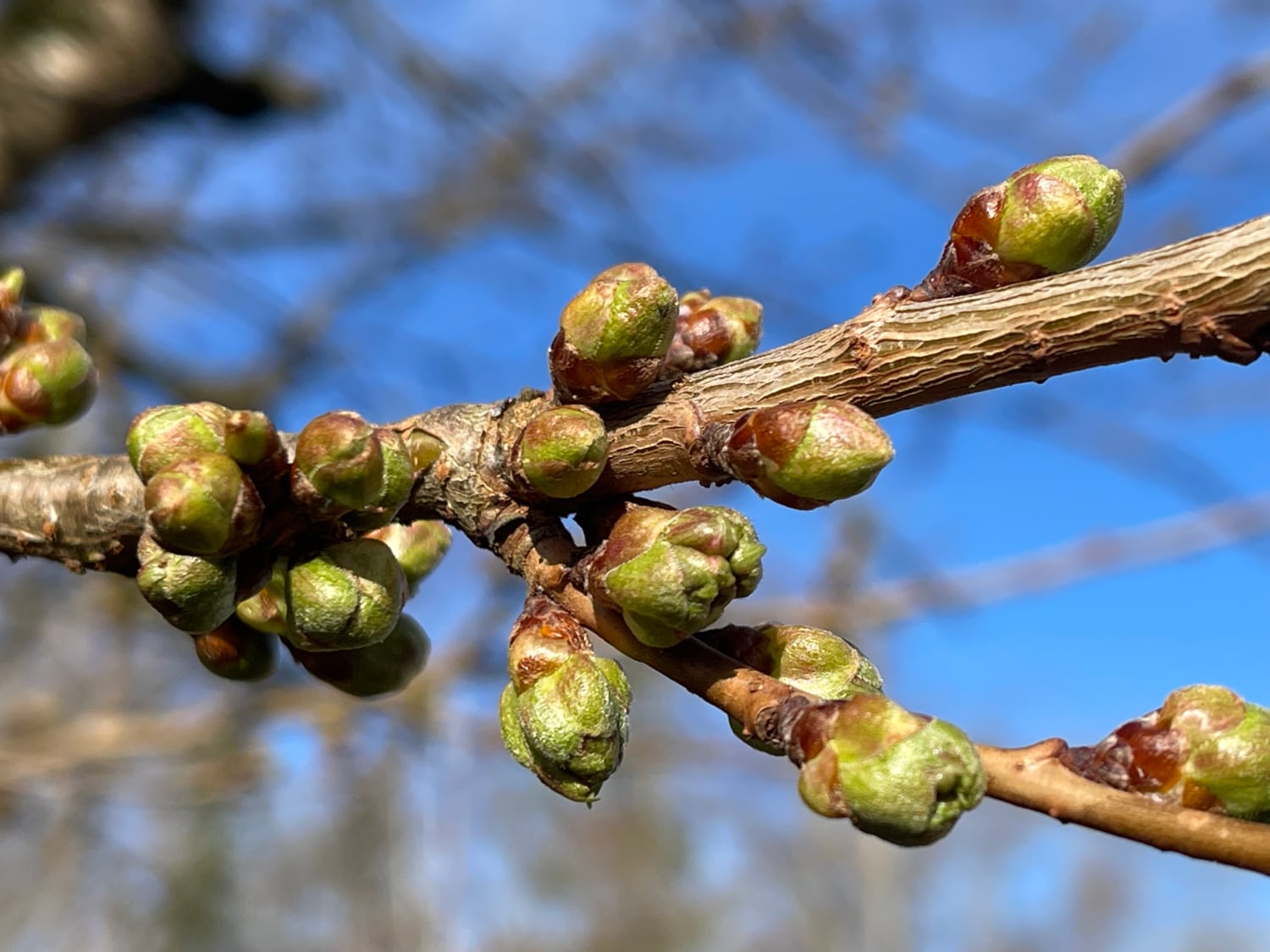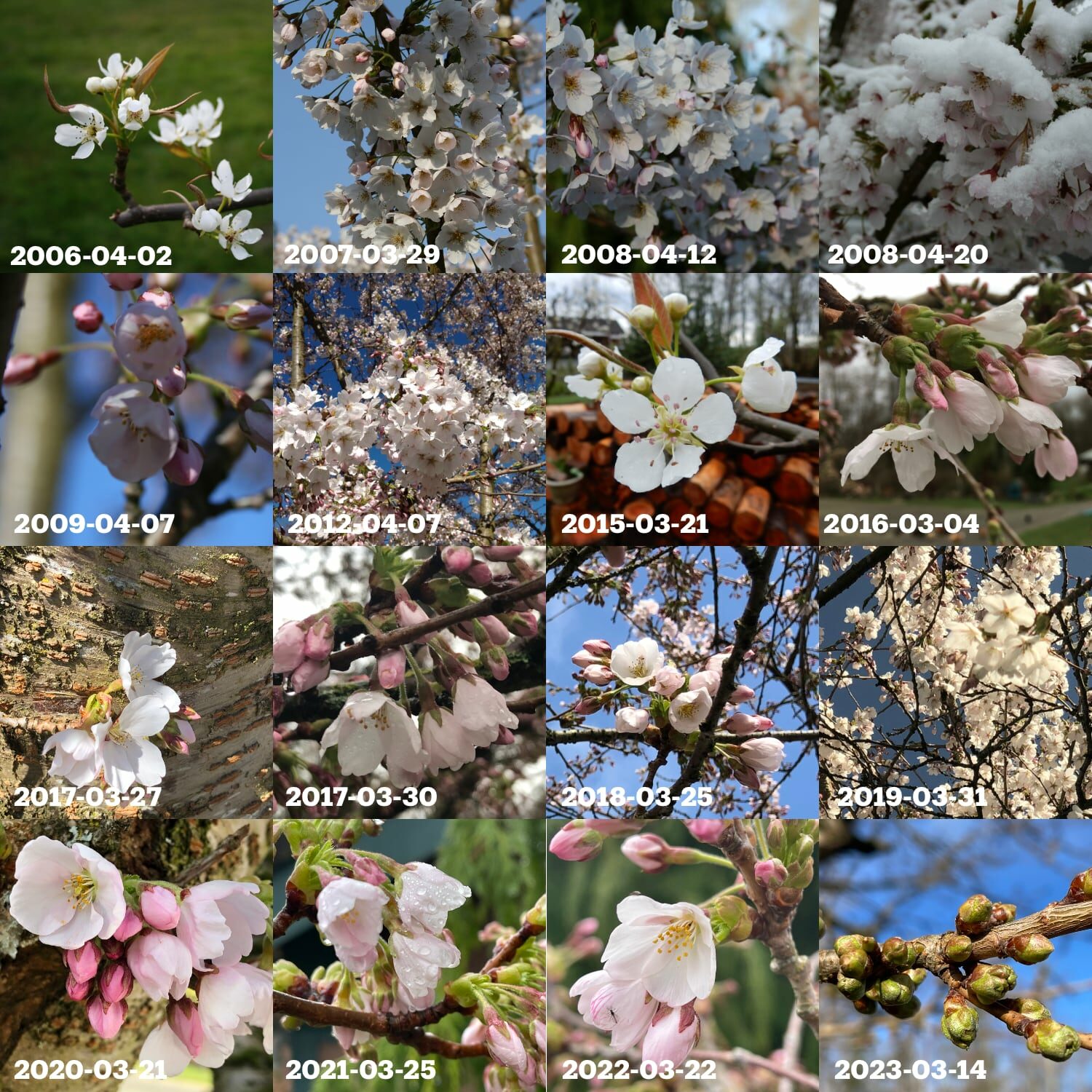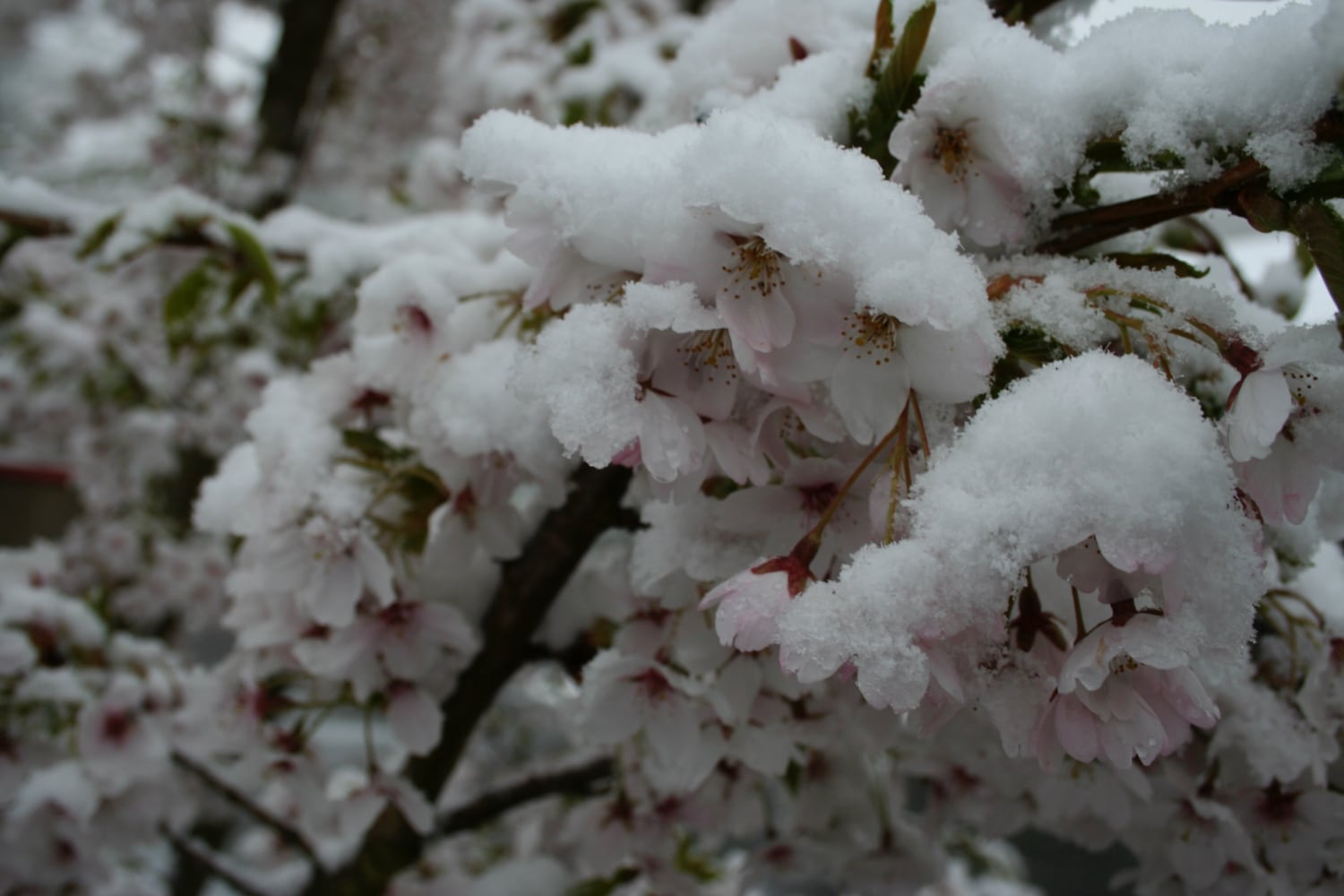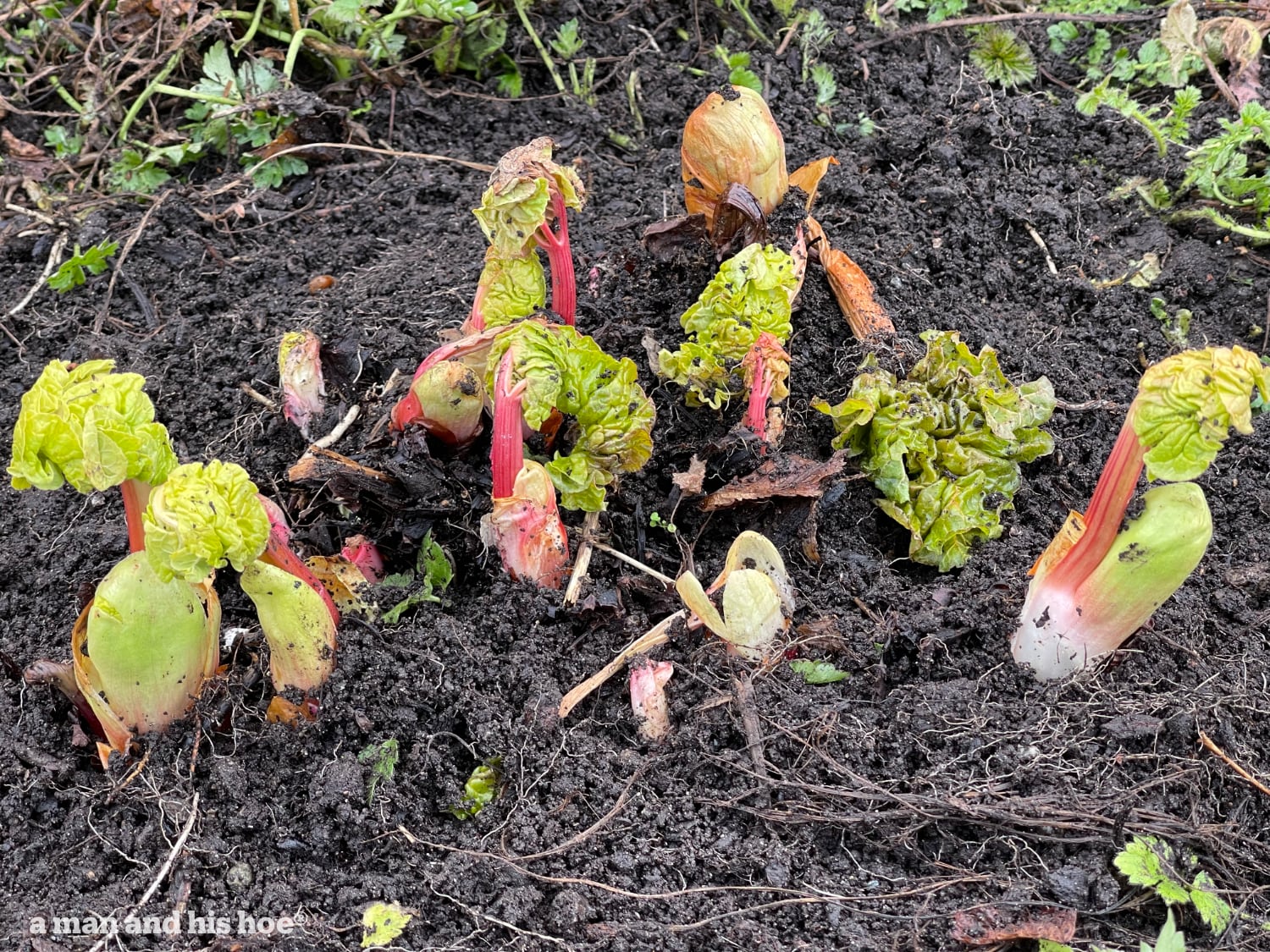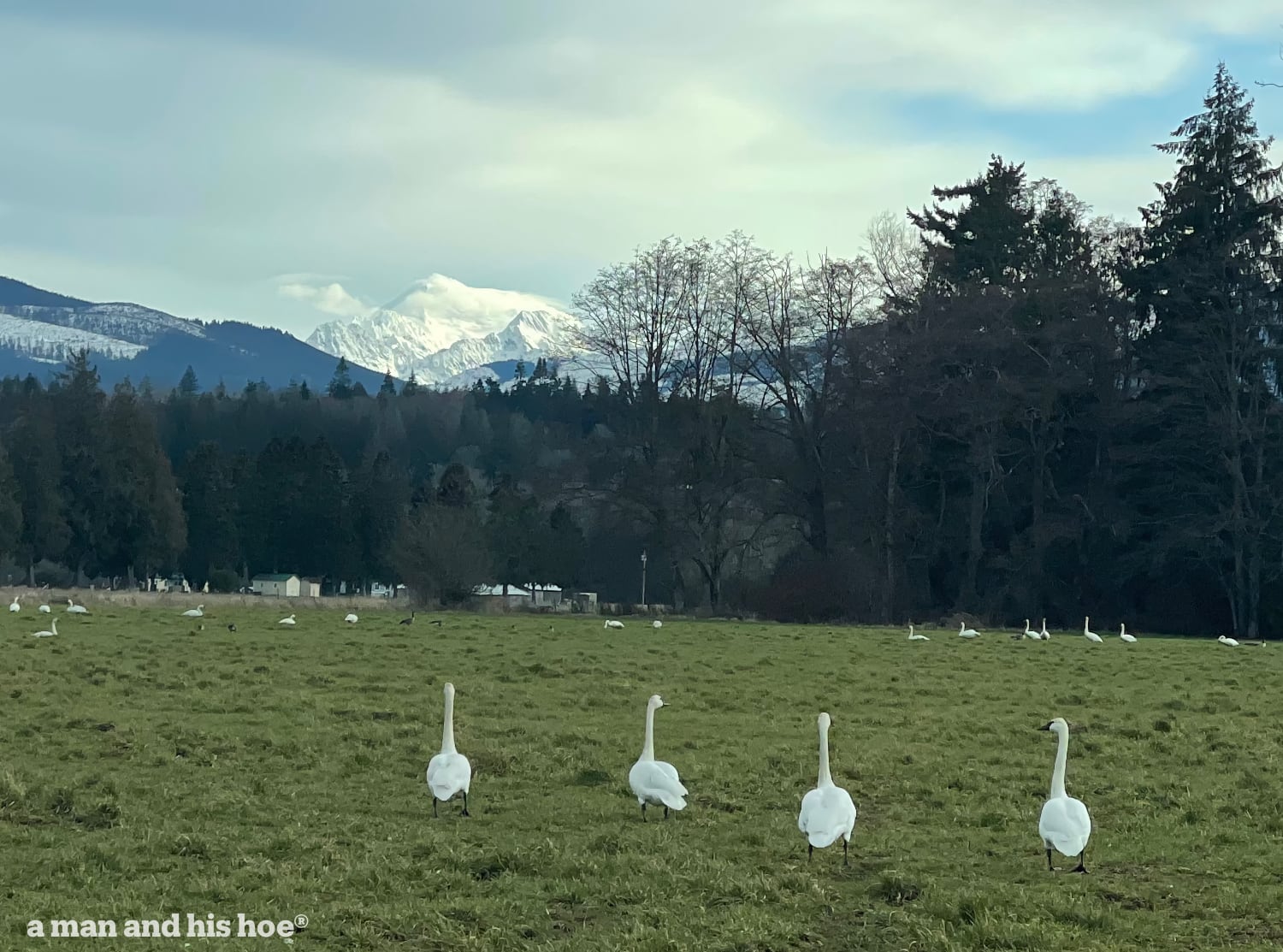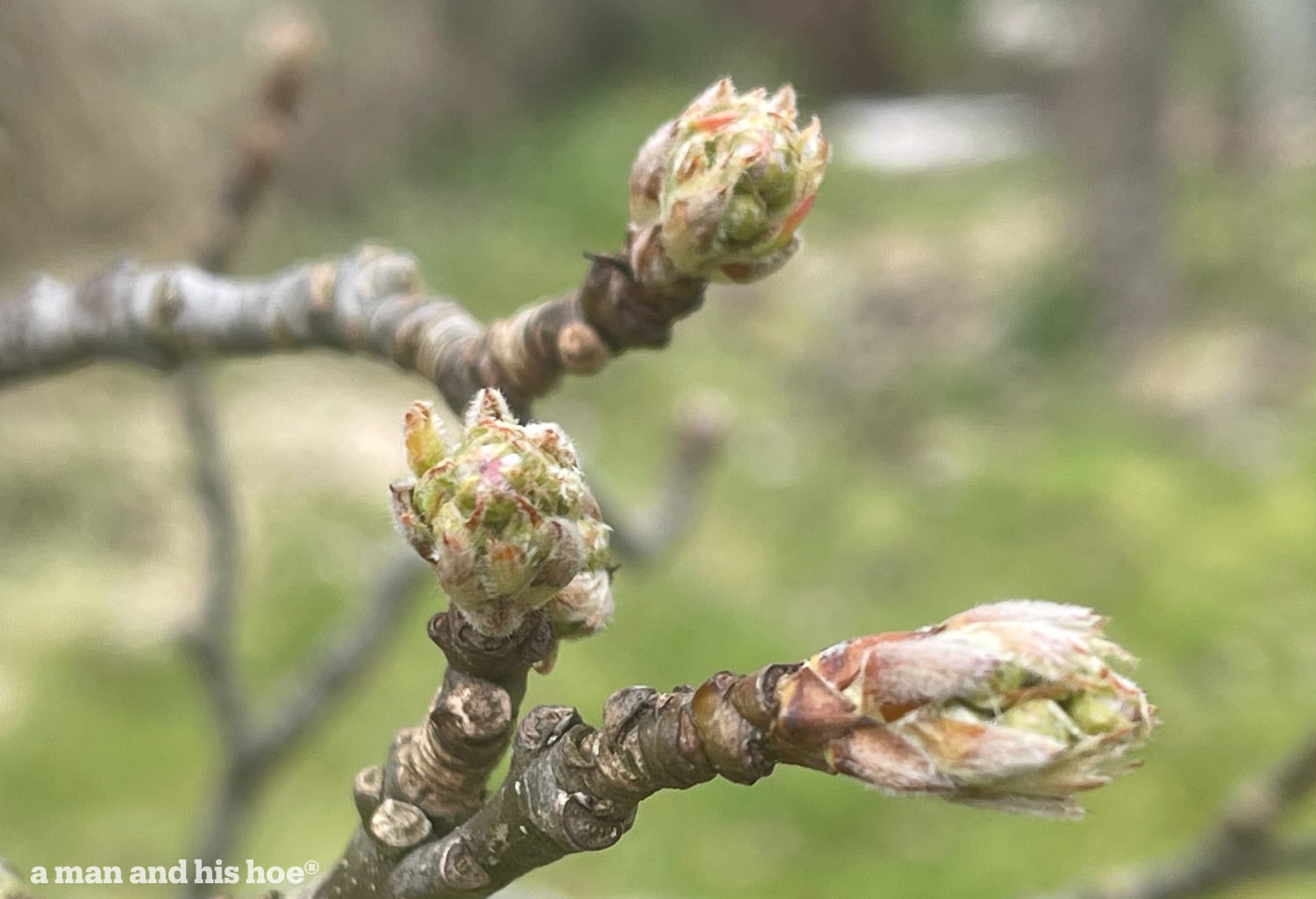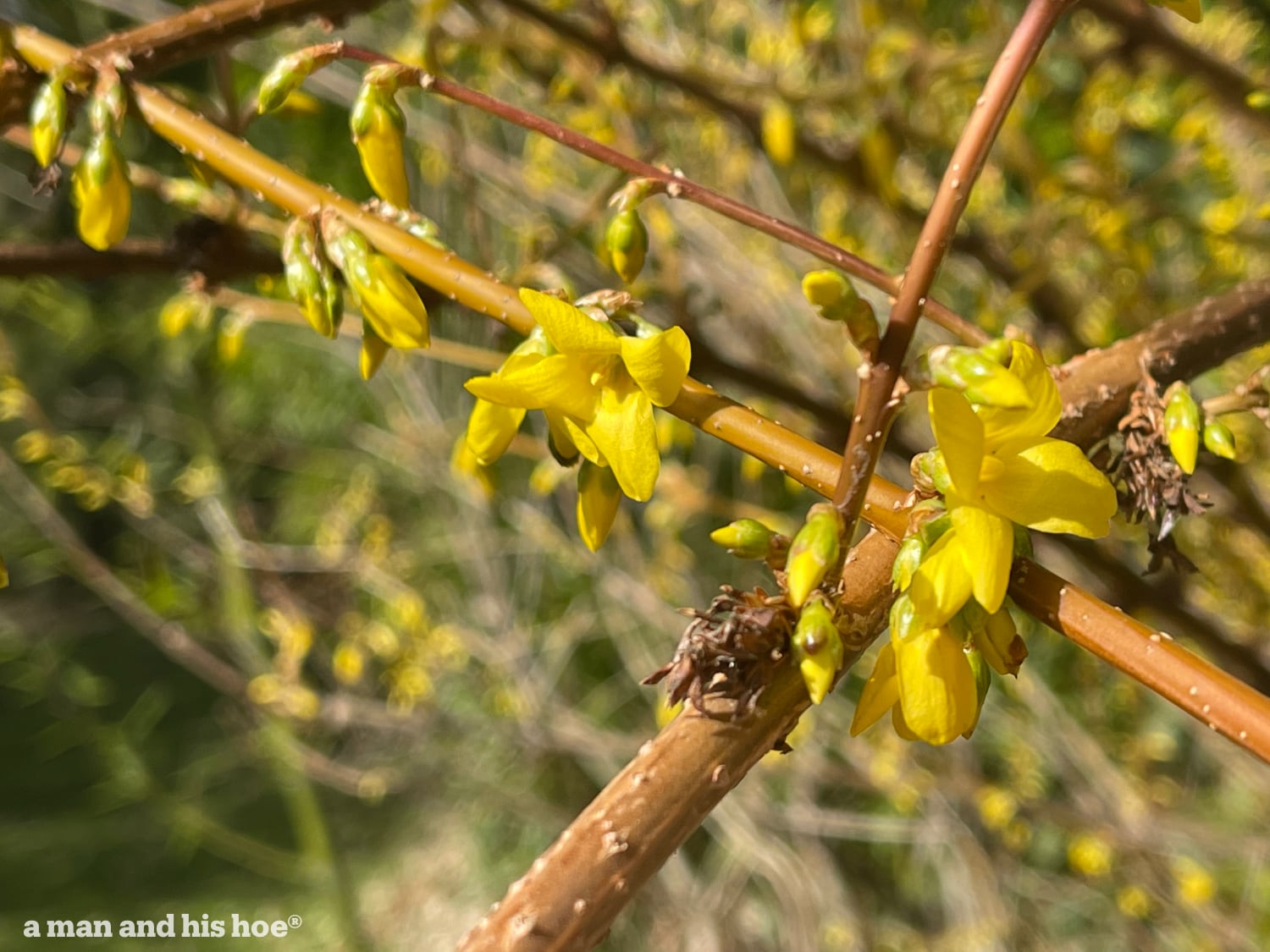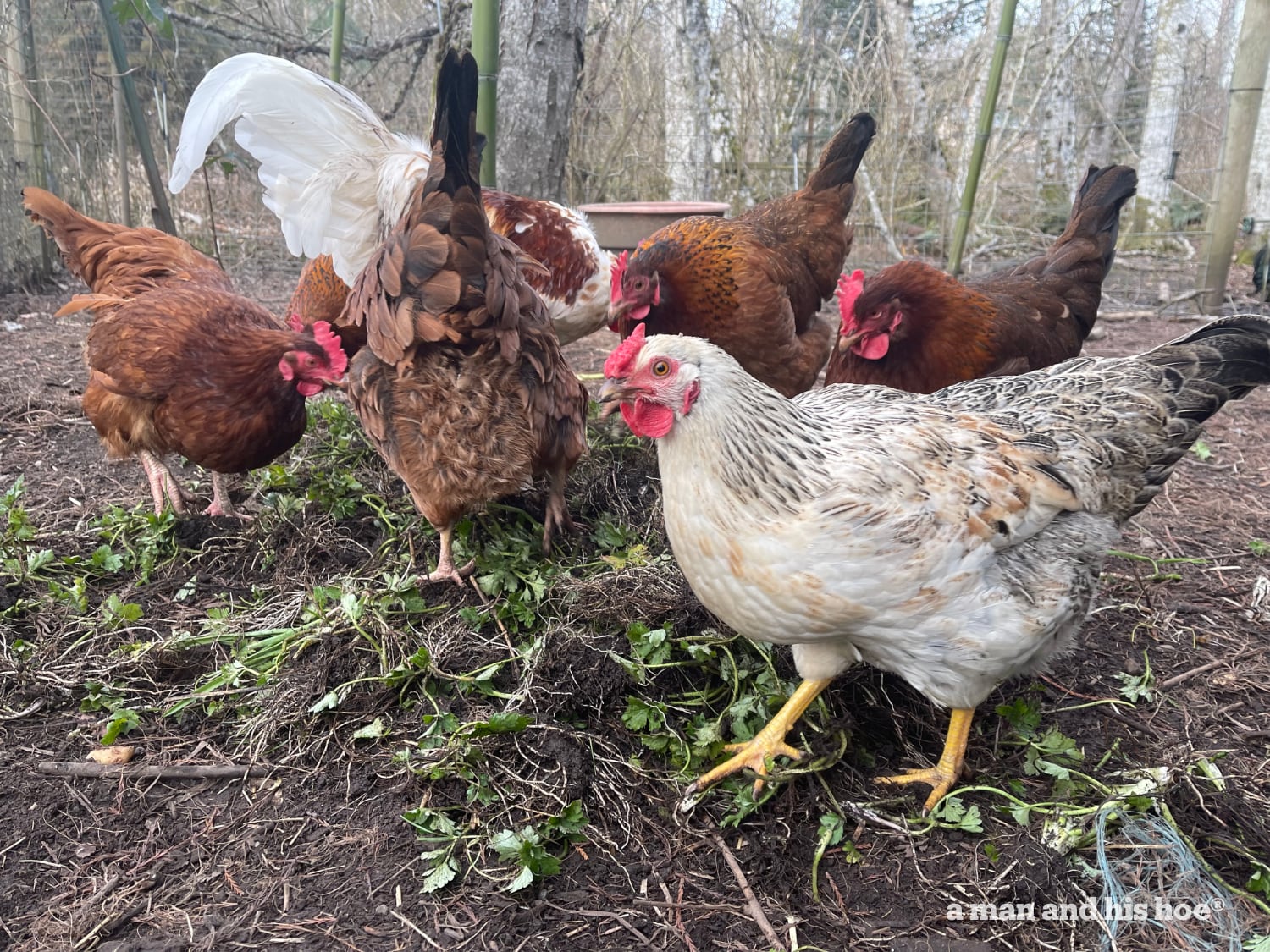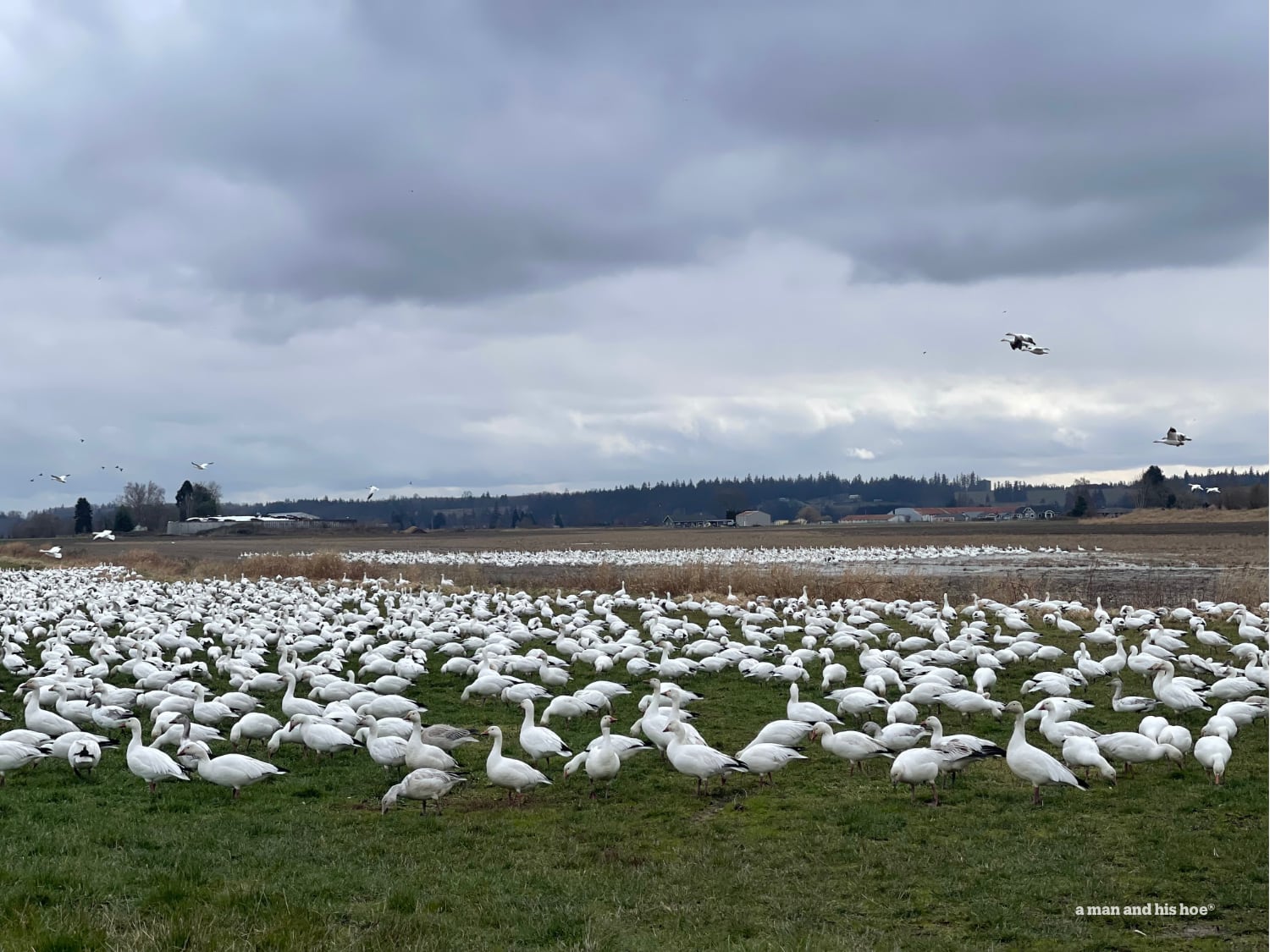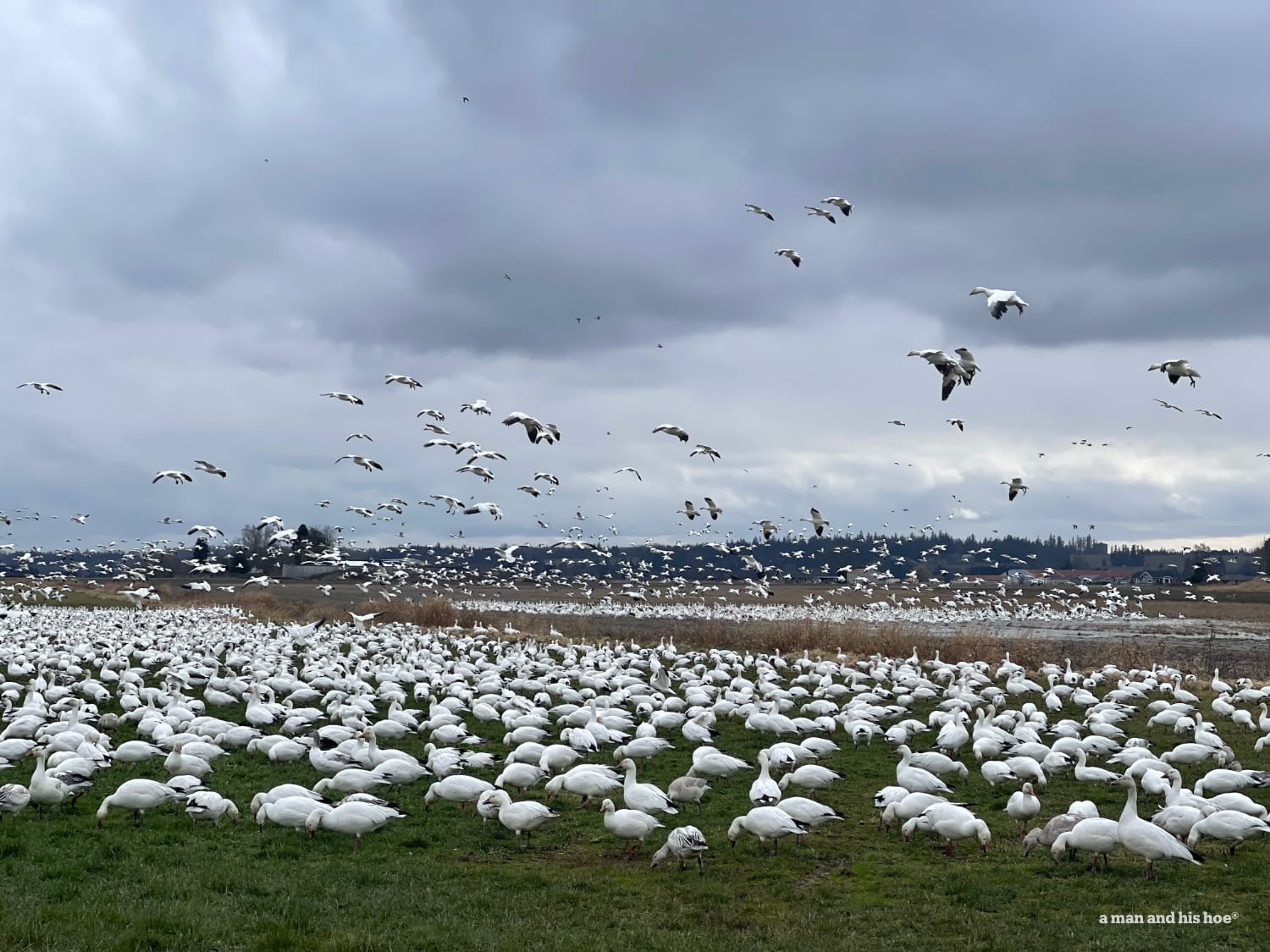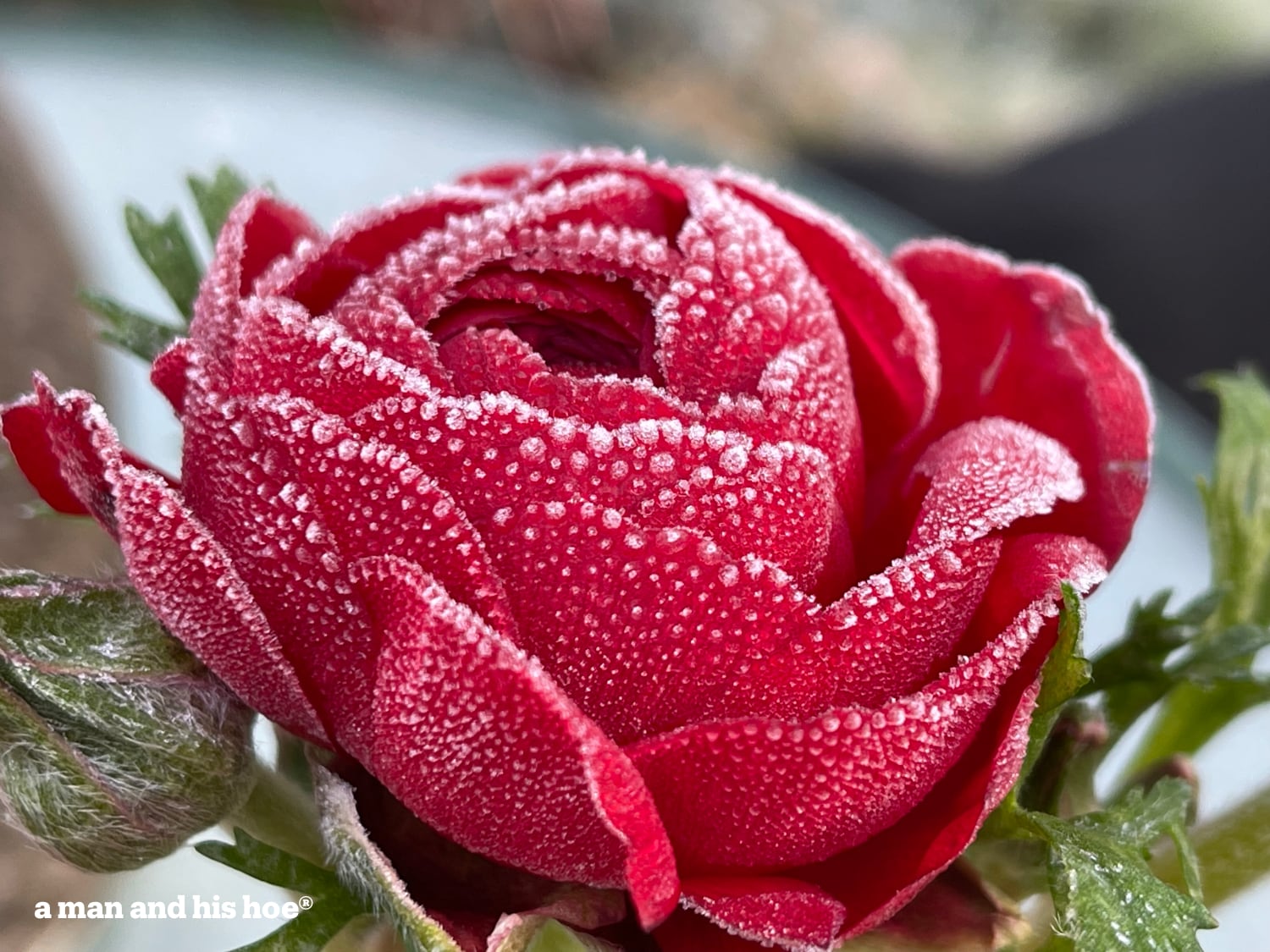
Just three days ago, Friday the 17th, frost decorated the flowers in the morning. Was it our last frost? Will there be no more frosts? The forecast is for it to be below freezing Monday morning. I hope not.
The thing about the last frost, you never know when you see a frosty morning if it is the last frost of the season. Not until things have warmed up so much that there is no chance of it freezing again until fall can you look back and say with certainty, that was the last frost of the season.
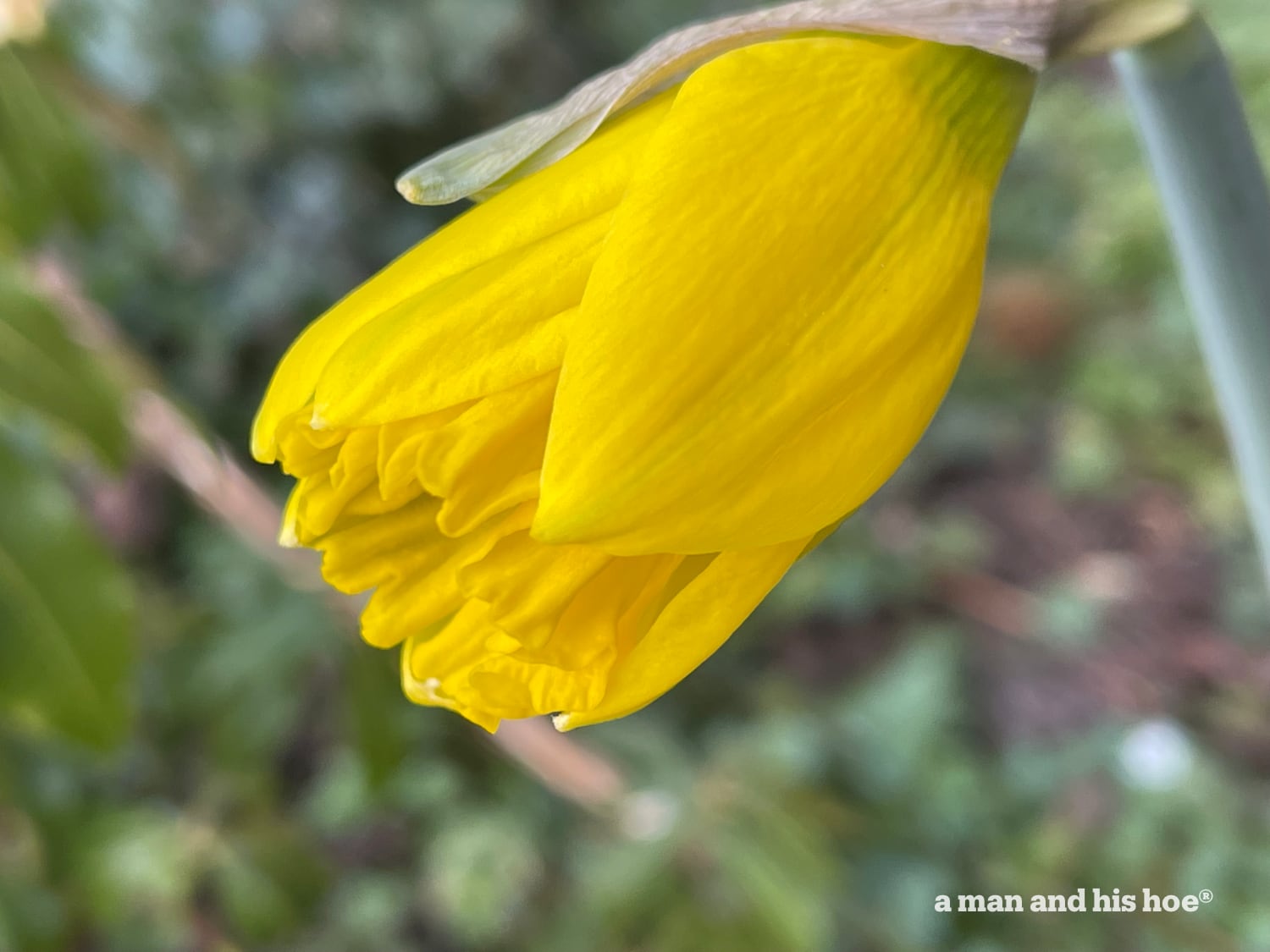
Two days before the spring equinox, the daffodils started to open. They are very late this year. And two days ago I heard bumblebees while planting potatoes. This year, the bees should be out when the fruit trees bloom. Last year, late, cool weather kept the bees snuggled in their burrows while the fruit trees bloomed. I had to hand pollinate a number of fruit trees.

You can see the blur of the bumblebee’s wings as it gets nectar and gathers pollen from one of the cherry trees. This is the oddest of cherry trees. It blooms year round. At times there are just a handful of flowers on it, but through the cold of winter, it always has a few blossoms.

This morning when I drove the car into town to have a dent fixed, I noticed two bald eagles hanging out nearby. They were still around when I came back several hours later. One even perched in a tree close to the house, and Ena watched it fly away when I tried to take a picture of it.
So are the eagles seeing our chickens and noticing the many ducks on the pond and thinking, “If we could do something about those dogs and people, this would make a great place to raise a family.”?

I did have a good laugh driving home in the rental car I have while they fix the dent in our car. I noticed this button and wondered what it did. It looked like a person sitting down with waves of heat at their rear end. “Ah ha! A seat warmer,” I thought. Either that or it is a special function to deodorize farts so when you sense you are about to let one rip, you press it.
But when I pressed it, no seat warming happened. No pine scent filled the air. Instead the car asked me out loud what command I wanted to give it. So it’s supposed to be a person’s face with the person talking. Not a person’s butt getting warmed or deodorized.
So it goes.
Today is the spring equinox. It happened at 2:24 pm Pacific Time. In Iran, the spring equinox is the first day of the year. I like their calendar. The first six months, the months of spring and summer, all have 31 days. The next 5 months all have 30 days. And the last month of the year has 29 days and 30 days in a leap year. It’s very easy to remember.
